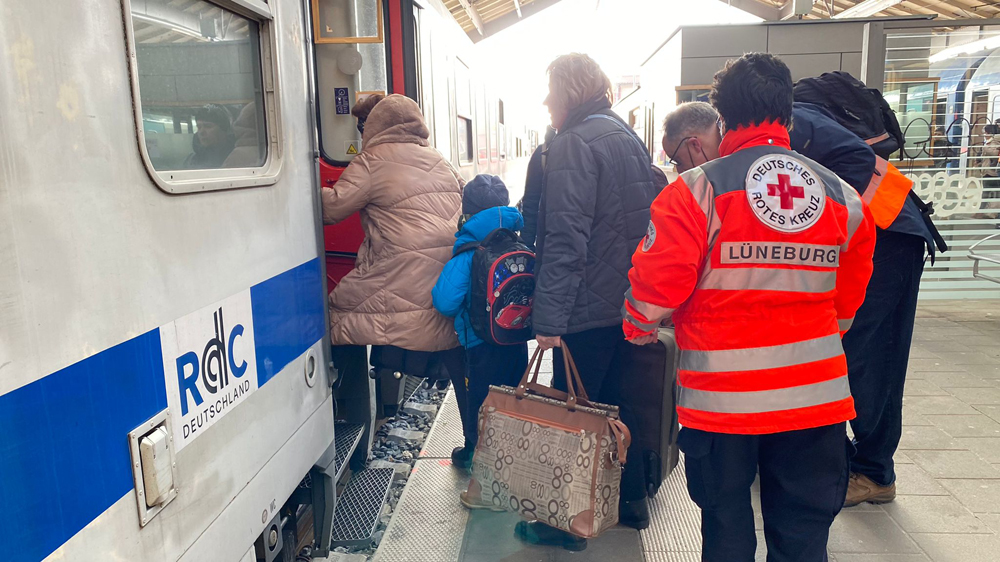
The thousands of refugees fleeing the Russian invasion of Ukraine have rapidly become millions, and a huge number continue to rely on railways — both in Ukraine to get to the border, and in the European countries to which they are moving.
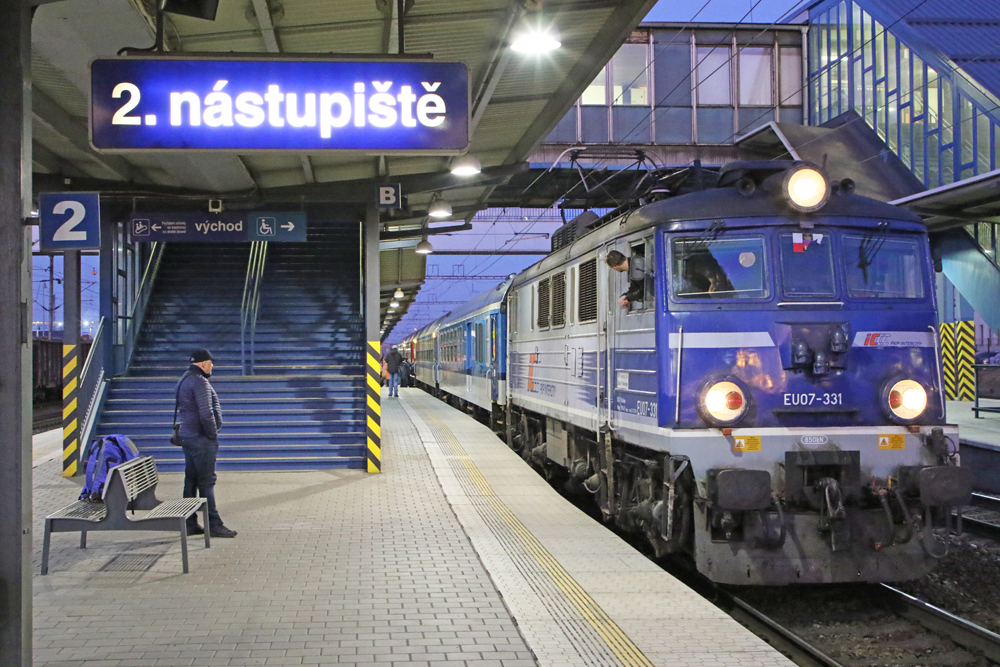
Major stations across Europe, as well as those at previously insignificant rail junctions, are now seeing waves of people arriving daily. The European Union is allowing Ukrainian refugees free entry and at least three-year stays, but European countries are making sure only legitimate refugees enter and move on, leading to delays. Reports suggest the time needed to leave Ukraine and enter Poland can sometimes be measured in days. Countries such as Hungary and Germany are carefully checking those arriving on regular international trains, with some routes delayed by a few hours as a result.
This writer’s experience in Vienna a few days ago showed people arriving on every train from countries that directly border Ukraine, such as Slovakia, Hungary, Romania and Poland, with several hundred getting off each train. Some of these trains run hourly, as Vienna is one of the main hubs in the European rail network. Austrian volunteers, police, and officials were busy helping the new arrivals find food, shelter, and in some cases onward connections. The vast majority were women and small children, some accompanied by elderly relatives or occasionally a dog, but most with almost no luggage.
Queues of refugees at the Vienna station ticket office, arranging free tickets for onward trains, stretched across the station from early morning to late evening. There was no hustle and bustle, but in fact the opposite: very little conversation, as people patiently waited their turn, with many of the children probably too tired after days of traveling to do anything other than sit and wait.
Similar scenes are now a daily occurrence in multiple countries as people move west, many using trains of the regular international network, often with extra cars added.
RDC running daily trains from the Polish border
The German subsidiary of Pittsburgh-based Rail Development Corp. has begun running daily 11-car trains from the German-Polish border to Hannover in central Germany. The trains, each carrying about 660 people, were arranged on short notice and funded by the German federal government. They run from the eastern German city of Frankfurt an der Oder (not to be confused with Germany’s financial hub of Frankfurt am Main), where both regular and special trains from Poland are daily bringing thousands of people fleeing Ukraine.
The first RDC trains started operating March 10, with volunteers from the German Red Cross joining RDC’s onboard crews to help look after the passengers.
Poland has so far received the majority of the 2.8 million people who have fled Ukraine since Feb. 24 —roughly the same as the population of Kansas or Mississippi moving to a neighboring state in two weeks. Most of the refugees are women and children, since most men ages 18-60 are prohibited from leaving in anticipation they will be needed to fight the invasion.
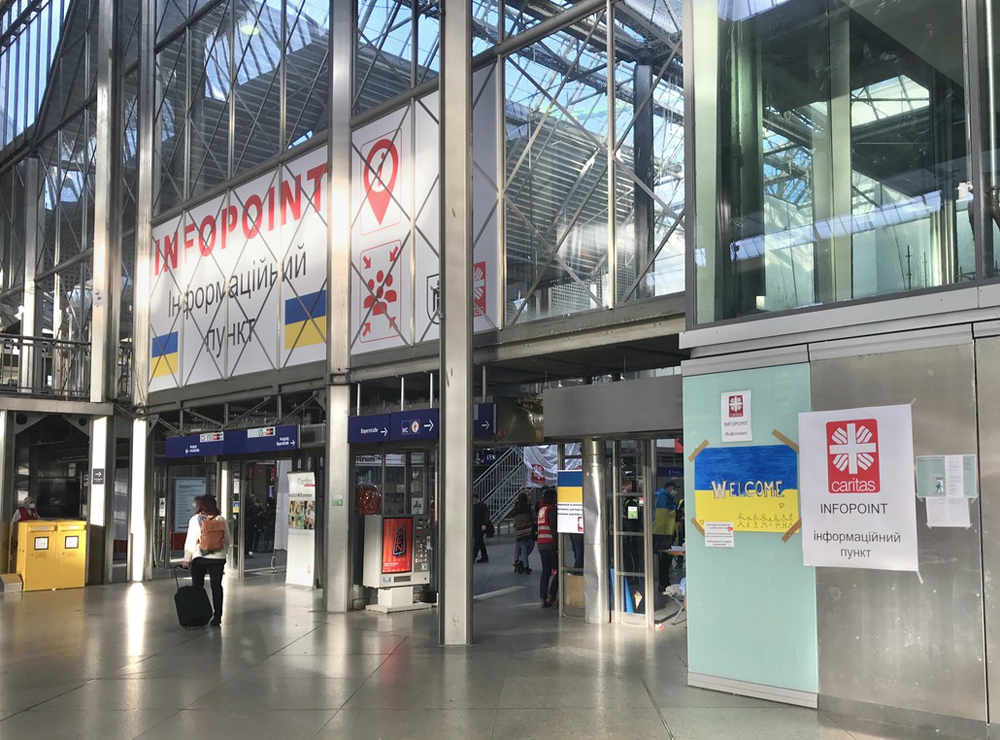
Authorities in Poland fear they cannot cope with housing and feeding so many unexpected new inhabitants. As a result, governments across Europe are offering to take people west from Poland. The German government’s initiative involving the RDC-operated trains includes repurposing part of the huge Hannover trade fair center, site of the global Expo 2000 exhibition at the beginning of the century, as a refugee facility. Within a week, it will be providing temporary lodging for several thousand people, until those people can find more permanent accommodation elsewhere in the next few weeks.
Several other rail companies have either increased existing services or added special trains from Poland to Germany. German national long-distance operator Deutsche Bahn and Polish state rail company PKP Intercity have has added cars and extra locomotives to operate more services between Warsaw and Berlin. PKP Intercity has carried 500,000 refugees since the war began Feb. 24.
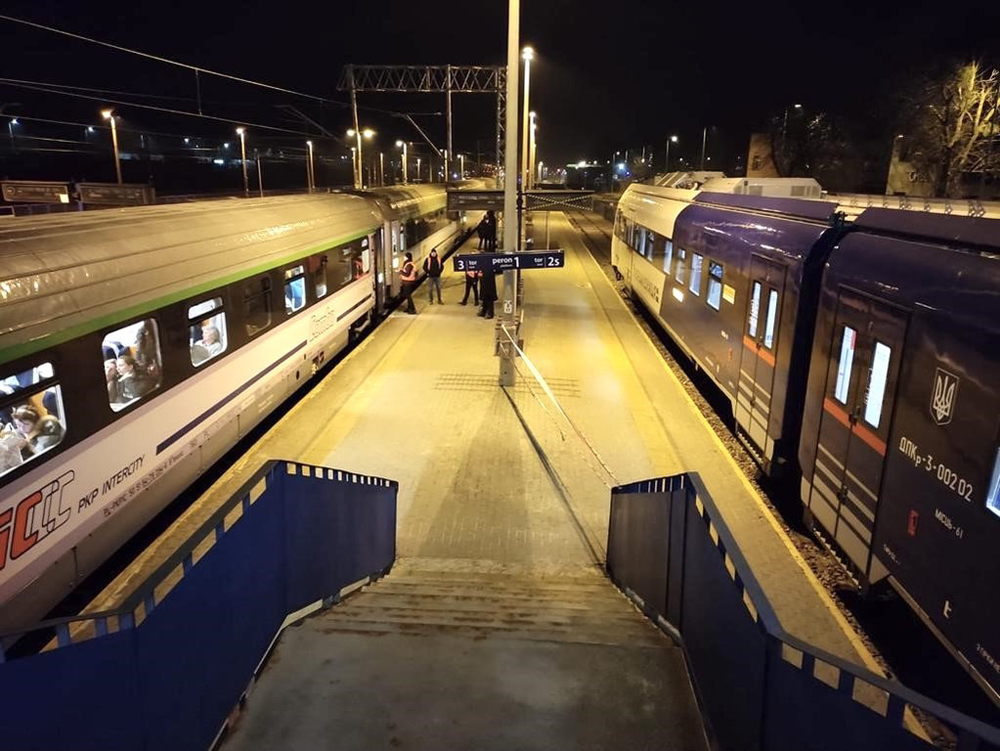
Together with Ukrainian Railways (Ukrzaliznytsia, or UZ), PKP Intercity has run trains into Poland from cities including Kyiv, Lviv, and Odessa, plus Dnipro, Zaporozhye, and Kryvyi Rih. These have arrived via stations in Przemyśl, Chełm, Hrubieszów, and Warsaw, where help, food, and information about onward transport options have been provided. As of March 13, over 500 trains had been run so far — some scheduled, with extra cars added, but over half extra trains from PKP Intercity and other Polish passenger companies.
Other rail companies are helping out. German-based, pan-European rail equipment logistics company RailAdventure — which normally specializes in moving new passenger equipment from factories to customers — organized a 16-car special train at its own expense over the weekend, taking about 1,500 refugees from the Polish border station of Dorohusk to Munich overnight.
Ukrainian railways maintain services despite missile attacks
Ukrainian state railway Ukrzaliznytsia continues to operate trains even as Russian forces occupy parts of the country and appear to be seeking to surround the capital, Kyiv, which is a major rail hub.
Ukrzaliznytsia was an early recipient of the Starlink satellite communication system donated by Tesla founder Elon Musk, allowing the railway to help UZ communicate with its employees around the country, as well as with the government. The company has been prioritizing the evacuation of civilians west from cities such as Kharkiv and Kyiv although amazingly — even as some routes have been attacked or temporarily shut following Russian missile strikes — the company is still running freight service, too. This includes export trains that supply Ukrainian iron ore to steel plants in neighboring Poland and Slovakia in the first two weeks of the Russian invasion.
Prime ministers visit Kyiv by train
Underlining rail’s significance in connecting Ukraine to the rest of Europe, prime ministers from three European Union nations — Poland, the Czech Republic, and Slovenia — are traveling by train today (Tuesday, March 15) to visit Kyiv.
“It is our duty to be where history is forged. Because it’s not about us, but about the future of our children who deserve to live in a world free from tyranny,” said Polish Prime Minister Mateusz Morawiecki in a report by Reuters. Morawiecki set off across the border with Czech Prime Minister Petr Fiala and Janez Jansa of Slovenia.
Fiala said the aim was “to confirm the unequivocal support of the entire European Union for the sovereignty and independence of Ukraine.”
Previously: “Railways help rescue millions, become targets after Russia attacks Ukraine,” Trains News Wire, March 6, 2022.
— Updated at 8:10 a.m. CDT to add visit by prime ministers.






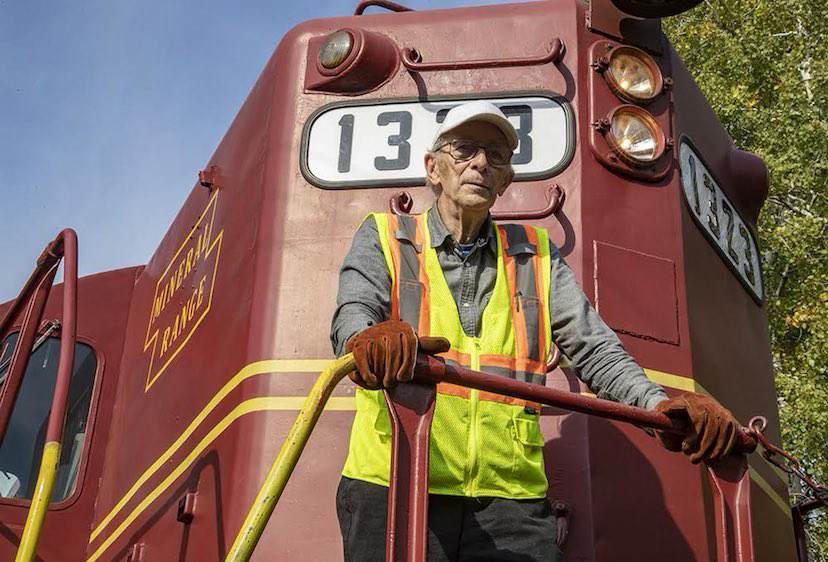
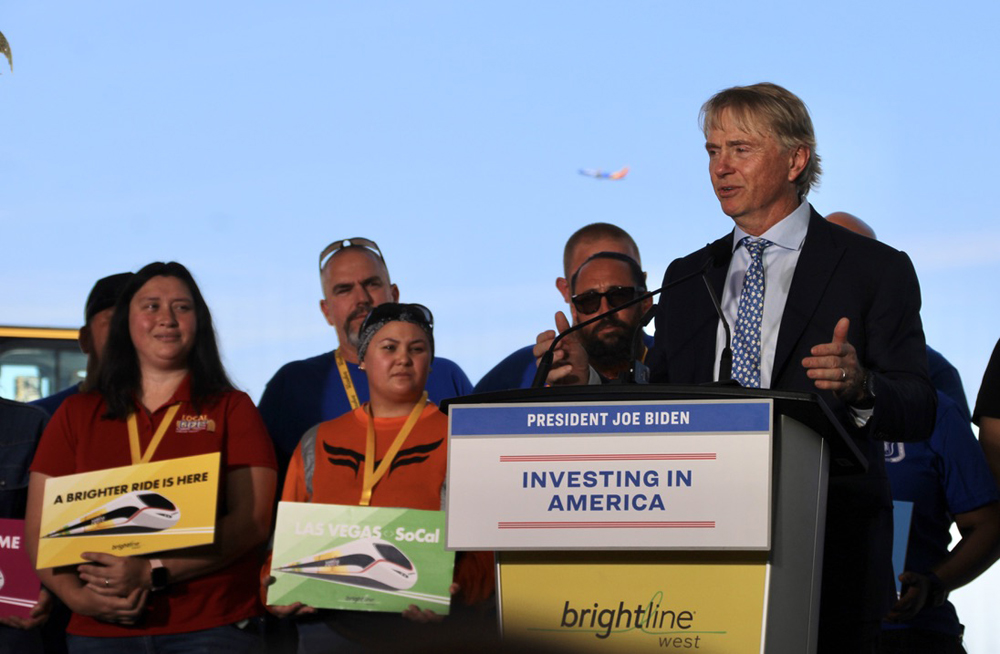
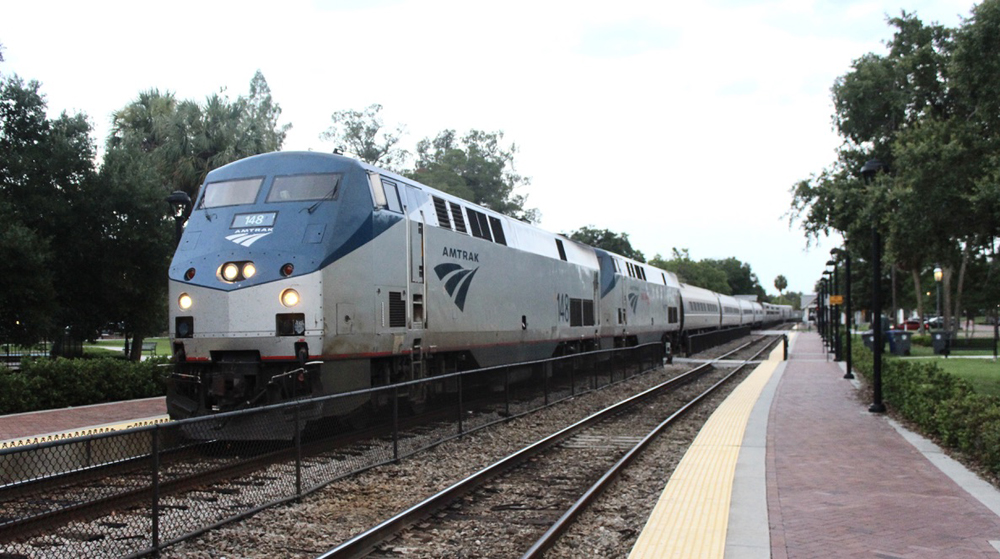
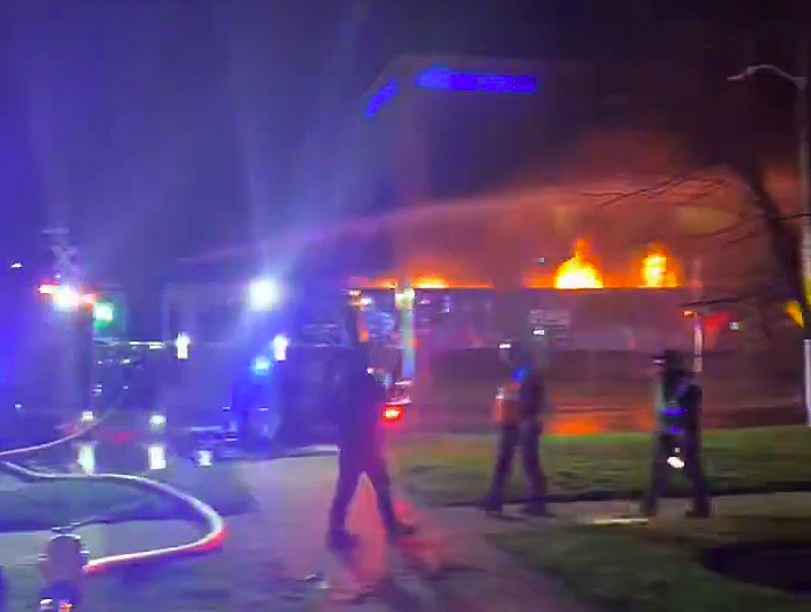




Shame on the editors of NewsWire for not giving credit where credit is due; the man behind the magnanimous gesture of RDC’s is none other than its CEO, Mr. Henry Posner iii.
Southern Railway’s (USA) slogan was “LOOK AHEAD – LOOK SOUTH”.
Now with World War III imminent, the world slogan would read “LOOK AHEAD – LOOK WEST”.
RDC = Rail Diesel Car … At first I though Budd Cars were being used!
Amazing that here in the 21st Century that rail plays a big role in a modern conflict — goes to shows that rail is far from a “obsolete 19th Century tech” as many in America claim as they promote self-driving cars and hyperloops.
Benjamin: There are many, many in the United States who are either indifferent to or oppose self-driving cars and hyperloops who also claim that rail is obsolete.
Seems to indicate tail is a strategic necessity well done all involved
It has taken this immense, horrid genocidal war to demonstrate that some nations have a functioning passenger rail system. Like Poland and Czech Republic and Germany. Can you imagine if this happened in USA, Mexico or Canada?
Imagine if the combined population of western Canada had to relocate. Oh, we’ll have one train a week from now.